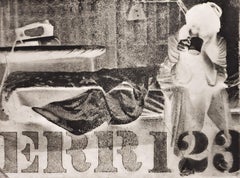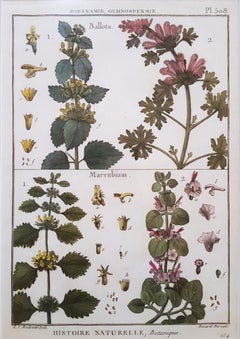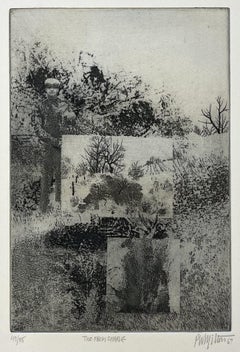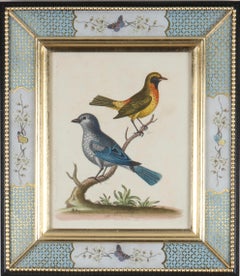Art by Medium: Engraving
1960s Surrealist Art by Medium: Engraving
Black and White, Engraving, Etching, Photogravure, Lithograph, Screen
1740s Naturalistic Art by Medium: Engraving
Watercolor, Engraving, Laid Paper, Intaglio
1920s Modern Art by Medium: Engraving
Drypoint, Etching
1960s Art by Medium: Engraving
Engraving, Etching
1990s Contemporary Art by Medium: Engraving
Mezzotint
18th Century Art by Medium: Engraving
Engraving, Watercolor
1780s Realist Art by Medium: Engraving
Engraving
1780s Realist Art by Medium: Engraving
Engraving
1780s Realist Art by Medium: Engraving
Engraving
1780s Realist Art by Medium: Engraving
Engraving
1780s Realist Art by Medium: Engraving
Engraving
20th Century Art by Medium: Engraving
Etching, Drypoint
2010s Contemporary Art by Medium: Engraving
Paper, Drypoint, Etching
1970s Art by Medium: Engraving
Engraving
1870s Impressionist Art by Medium: Engraving
Drypoint, Etching, Aquatint
20th Century American Realist Art by Medium: Engraving
Drypoint
1960s Abstract Art by Medium: Engraving
Engraving
21st Century and Contemporary Contemporary Art by Medium: Engraving
Metal
Late 18th Century Art by Medium: Engraving
Engraving, Etching
Late 18th Century Art by Medium: Engraving
Engraving
Mid-18th Century Renaissance Art by Medium: Engraving
Engraving
Early 19th Century Academic Art by Medium: Engraving
Engraving
16th Century Art by Medium: Engraving
Engraving
1890s Art by Medium: Engraving
Aquatint, Drypoint
1690s Realist Art by Medium: Engraving
Engraving
2010s Contemporary Art by Medium: Engraving
Drypoint
Early 20th Century Modern Art by Medium: Engraving
Etching, Drypoint
19th Century Realist Art by Medium: Engraving
Engraving
20th Century Surrealist Art by Medium: Engraving
Drypoint, Etching
20th Century Surrealist Art by Medium: Engraving
Drypoint, Etching
20th Century Surrealist Art by Medium: Engraving
Drypoint, Etching
1670s Realist Art by Medium: Engraving
Engraving
Late 19th Century French School Art by Medium: Engraving
Handmade Paper, Engraving, Photogravure
Late 19th Century Modern Art by Medium: Engraving
Drypoint, Etching
1970s Art by Medium: Engraving
Engraving, Aquatint
1780s Realist Art by Medium: Engraving
Engraving
1990s Art by Medium: Engraving
Engraving, Aquatint
1910s Art by Medium: Engraving
Woodcut, Drypoint
1780s Realist Art by Medium: Engraving
Engraving
1780s Realist Art by Medium: Engraving
Engraving
1780s Realist Art by Medium: Engraving
Engraving
1780s Realist Art by Medium: Engraving
Engraving
1870s Realist Art by Medium: Engraving
Engraving
1920s Art by Medium: Engraving
Drypoint, Etching
20th Century Neo-Expressionist Art by Medium: Engraving
Etching, Drypoint
20th Century Modern Art by Medium: Engraving
Drypoint, Aquatint
20th Century Modern Art by Medium: Engraving
Drypoint, Aquatint
20th Century Modern Art by Medium: Engraving
Drypoint, Aquatint
20th Century Modern Art by Medium: Engraving
Drypoint, Aquatint
20th Century Modern Art by Medium: Engraving
Drypoint, Aquatint
20th Century Modern Art by Medium: Engraving
Drypoint, Aquatint
20th Century Modern Art by Medium: Engraving
Drypoint, Aquatint
20th Century Modern Art by Medium: Engraving
Drypoint, Aquatint
20th Century Modern Art by Medium: Engraving
Drypoint, Aquatint
20th Century Modern Art by Medium: Engraving
Drypoint, Aquatint
20th Century Modern Art by Medium: Engraving
Drypoint, Aquatint
20th Century Modern Art by Medium: Engraving
Drypoint, Aquatint
20th Century Modern Art by Medium: Engraving
Drypoint, Aquatint




